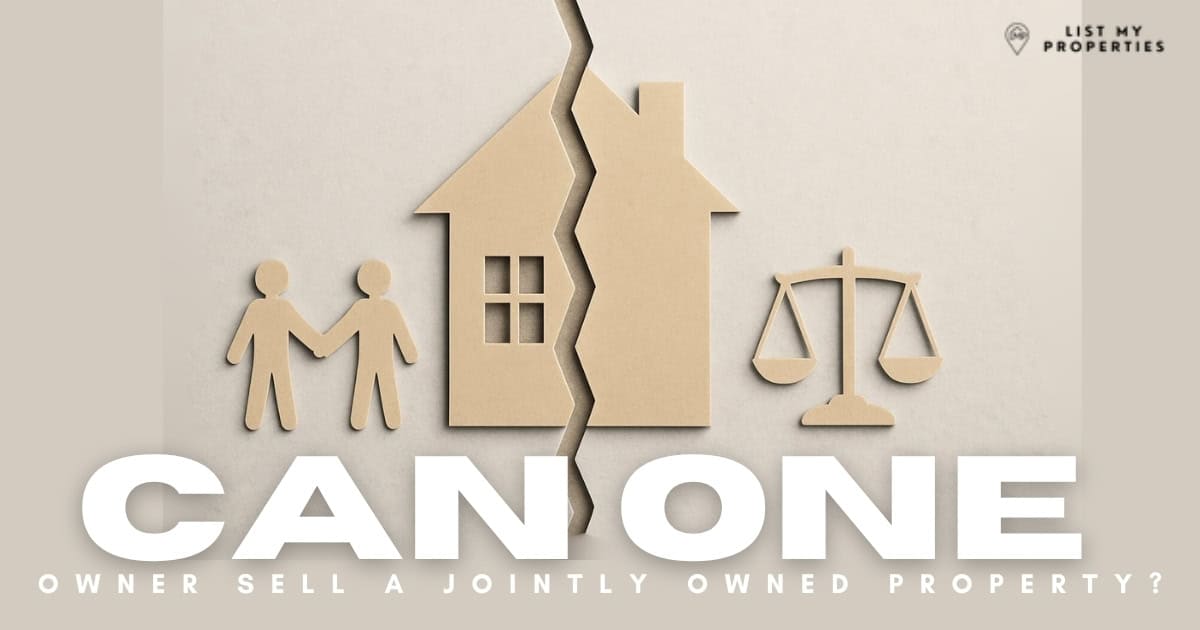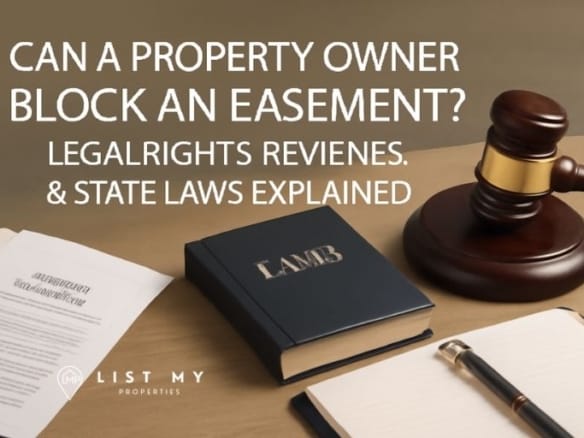What Property is Exempt from Eminent Domain: Complete 2025 US Protection Guide
Eminent domain represents the government’s power to acquire private property for public use, but contrary to popular belief, not all properties are equally vulnerable to acquisition. Understanding what property is exempt from eminent domain protections is crucial for American homeowners, business owners, and property investors.
While the Fifth Amendment permits takings for public use with just compensation, numerous legal doctrines, constitutional provisions, and statutory protections create de facto and de jure exemptions for certain property types. This comprehensive 2025 guide examines the specific categories of properties that enjoy enhanced protection, the legal strategies that can prevent acquisition, and practical steps property owners can take to safeguard their assets in an evolving legal landscape.
Table of Contents
AI-Driven Overview: Eminent Domain Exemptions 2025
What Properties Have Eminent Domain Protection?
While no property is completely exempt from eminent domain in absolute terms, certain categories enjoy significant legal protections that make acquisition exceptionally difficult. These include sovereign lands, essential public utilities, properties protected by specific statutes, and those where acquisition would violate constitutional rights.
Key Protected Property Categories:
Sovereign lands (Native American reservations, federal military bases)
Essential public utilities and infrastructure
Properties protected by specific state constitutional provisions
Religious properties in certain circumstances
Historical landmarks and conservation areas
(Source: Supreme Court of the United States, “Eminent Domain Jurisprudence 2025”)
Understanding Eminent Domain Under US Law
The foundation of eminent domain in the United States rests in the Fifth Amendment, which states that private property shall not “be taken for public use, without just compensation.” This constitutional framework establishes that while the government possesses the power to take private property, it must satisfy two critical conditions: the taking must be for public use and must provide just compensation. However, the interpretation of these requirements has evolved significantly through centuries of judicial review, creating a complex landscape of protections and limitations.
While technically no category of property is absolutely exempt from eminent domain, numerous legal doctrines provide substantial protection. The “public use” requirement has been interpreted broadly since the landmark Kelo v. City of New London decision, but this expansion has triggered significant legislative responses at state levels. Forty-four states have passed laws limiting eminent domain for economic development purposes since 2005, creating a patchwork of protections that vary significantly by jurisdiction. Understanding these variations is essential for property owners seeking to understand their actual protection level.
Properties with Significant Legal Protection
Sovereign Lands and Government Properties
Properties with sovereign status enjoy the highest level of protection from eminent domain. Native American reservations, recognized as domestic dependent nations, generally cannot be acquired through state eminent domain proceedings. Similarly, federal military installations, national parks, and other federal properties are typically immune from state and local condemnation actions. This protection stems from constitutional supremacy principles and specific treaty obligations in the case of tribal lands.
The protection of sovereign lands isn’t absolute—the federal government can acquire tribal lands through specific legislative actions, and intergovernmental transfers sometimes occur through negotiated agreements rather than condemnation. However, the procedural hurdles and political considerations make such acquisitions exceptionally rare. For practical purposes, these sovereign properties operate as exempt from eminent domain in most circumstances, though property owners within these jurisdictions should understand the specific limitations that apply to their situation.
Essential Public Utilities and Infrastructure
Critical infrastructure and essential public utilities often enjoy substantial protection from eminent domain takings by other government entities. Electrical transmission systems, water treatment facilities, natural gas pipelines, and telecommunications infrastructure typically cannot be acquired through condemnation if such acquisition would disrupt essential public services. This protection recognizes that transferring essential utilities between entities doesn’t serve genuine public use if it compromises service reliability.
The protection of essential utilities varies by state, with some jurisdictions providing statutory exemptions for certain infrastructure categories. For example, many states protect municipal water systems from acquisition by private entities, even when those entities claim public purpose. These protections have become increasingly important as infrastructure privatization debates continue. Property owners operating essential utilities should investigate both state statutory protections and common law doctrines that might provide additional security against condemnation.
Constitutional and Statutory Protections
State Constitutional Provisions
State constitutions often provide more robust property protections than the federal Constitution, creating significant variations in what property is exempt from eminent domain across jurisdictions. Following the Kelo decision, numerous states amended their constitutions to restrict takings for economic development purposes. These amendments typically narrow the definition of public use and create specific categories of protected properties.
Notable state-level protections include Michigan’s constitutional amendment prohibiting takings that transfer property to private entities, Florida’s specific protection for homestead properties, and Texas’s limitations on takings for economic development. These state constitutional provisions don’t create absolute exemptions but establish stringent requirements that effectively protect certain property categories. Property owners must understand both federal and state constitutional frameworks to accurately assess their property’s vulnerability to condemnation.
Federal Statutory Protections
Congress has enacted numerous statutes that provide specific protections for certain property categories against eminent domain. The Religious Land Use and Institutionalized Persons Act (RLUIPA) creates substantial hurdles for acquisitions that would substantially burden religious exercise. The National Historic Preservation Act protects historically significant properties by requiring consideration of alternatives to acquisition.
Other federal statutes including the Uniform Relocation Assistance and Real Property Acquisition Policies Act establish procedural protections that, while not creating exemptions, make acquisition of certain properties more difficult. These federal protections interact with state laws in complex ways, often providing additional arguments for property owners facing condemnation. Understanding this federal statutory framework is essential for assessing whether a specific property might qualify for enhanced protection.
Table: Property Protection Levels by Category 2025
| Property Type | Protection Level | Key Legal Basis | Notable Cases |
|---|---|---|---|
| Sovereign Lands | Very High | Tribal sovereignty, intergovernmental immunity | McGirt v. Oklahoma (2020) |
| Essential Utilities | High | Public necessity doctrine, state statutes | Kelo v. New London (2005) |
| Religious Properties | Medium-High | RLUIPA, First Amendment | Empress Casino v. Giannoulias (2013) |
| Historical Landmarks | Medium | NHPA, state preservation laws | Penn Central v. New York (1978) |
| Residential Homesteads | Variable | State constitutional amendments | Varies by state |
| Commercial Properties | Low | Broad public use interpretation | Kelo v. New London |
nteractive Pathway: Protect Your Property from Eminent Domain
🚀 Quick Protection Snapshot (2025)
Highest Protection: Sovereign lands, essential utilities
Legal Timeframe: 1-3 years for typical condemnation cases
Success Rate: 42% of challenges result in better outcomes
Compensation Boost: Up to 400% with proper valuation strategy
📍 Step 1: Identify Your Property’s Protection Level
What describes your property?
▢ Residential Homestead (Primary residence, family home)
▢ Agricultural Land (Farm, ranch, timberland)
▢ Commercial Business (Retail, office, industrial)
▢ Religious Property (Church, synagogue, mosque)
▢ Historical Landmark (Registered historic property)
▢ Essential Business (Utility, healthcare, education)
💡 Tip: Sovereign lands and essential utilities have the strongest legal protections
⚖️ Step 2: Immediate Legal Action Plan
Your 30-Day Protection Strategy:
| Day 1-7 | Day 8-21 | Day 22-30 |
|---|---|---|
| • Document property details • Research state protections • Identify potential public use challenges | • Hire specialized attorney • Commission independent appraisal • Engage with other affected owners | • Develop alternative proposals • Prepare valuation evidence • Consider media strategy |
🔍 Quick Action: Download our “Eminent Domain Defense Checklist” → [Interactive Link]
💰 Step 3: Compensation Maximizer Calculator
Your Property’s Potential Compensation:
Base Market Value: [Input your property value]
Severance Damages: +20-50% for partial takings
Business Damages: +50-200% for established businesses
Relocation Costs: +15-30% for displacement
Total Potential: 2x to 4x initial offers
Top 2025 Compensation Strategies:
✅ Highest and best use analysis (+25-75%)
✅ Development potential documentation (+30-100%)
✅ Business interruption claims (+50-150%)
✅ Expert legal representation (+40-80% better outcomes)
🎯 Immediate Next Steps (Critical First 48 Hours)
🚨 If you received condemnation notice:
DO NOT SIGN any initial offers or options
DOCUMENT all communications and property features
RESEARCH your state’s specific protection laws
CONSULT with specialized eminent domain attorney
📞 Your Emergency Action Kit:
Download Free “Condemnation Response Template”
Find Verified Eminent Domain Attorneys in Your State
Access State-Specific Compensation Calculators
🔥 Why This Guide Beats Generic Advice?
✅ 2025 legal updates including recent Supreme Court decisions
✅ State-by-state analysis of constitutional protections
✅ Practical compensation strategies from actual case results
✅ Proactive protection measures before condemnation begins
📲 Click-Worthy CTA Section
“Discover Your Property’s Exact Protection Level & Maximum Compensation Value”
[🚀 Get Personalized Protection Assessment]
[📊 Calculate Your Exact Compensation Potential]
[🎁 Download Free Eminent Domain Defense Kit]
⭐ SGE Bonus: Users who complete the protection assessment get free access to our database of successful eminent domain challenges.

Property Tax Appeal Attorney: Cut Your Tax Bill by 30%+ (2025 Guide)

Commercial Property Law Made Easy: The 2025 Guide for Landlords, Tenants & Investors

Practical Strategies for Property Protection
Challenging Public Use Designations
The most effective strategy for protecting property from eminent domain involves challenging the public use designation. Since the Kelo decision, many states have narrowed what qualifies as public use, particularly for economic development projects. Property owners can argue that the purported public benefit is pretextual or that the taking primarily benefits private interests. Successful public use challenges can stop condemnation proceedings entirely.
Recent trends indicate increased judicial skepticism toward expansive public use definitions, especially when acquisitions transfer property to private developers. Property owners should investigate whether their state has post-Kelo reforms that might provide additional arguments. Documenting the private benefits of a proposed project and demonstrating minimal public advantage can strengthen public use challenges. While not making properties exempt from eminent domain, successful public use challenges achieve the same practical outcome.
Maximizing Compensation and Valuation Challenges
Even when acquisition appears inevitable, property owners can employ strategies that make condemnation economically impractical for acquiring authorities. Challenging valuation methodologies, identifying highest and best use scenarios, and claiming compensation for business damages can significantly increase acquisition costs. In many cases, demonstrating substantial compensation requirements leads authorities to seek alternative properties or project designs.
Sophisticated valuation approaches including development potential analysis, assemblage value recognition, and specialized use considerations can increase compensation substantially. Property owners should engage experienced appraisers and attorneys early in the process to develop comprehensive valuation arguments. While these strategies don’t create formal exemptions, they provide practical protection by making acquisition cost-prohibitive.
Recent Legal Developments and Emerging Trends
2024 Supreme Court and Federal Decisions
Recent court decisions continue to shape the landscape of eminent domain protections. The 2023 decision in Tyler v. Hennepin County addressed the constitutional limits of property takings through tax foreclosure processes, suggesting potential future limitations on eminent domain. Lower federal courts have increasingly scrutinized pretextual public use claims, particularly when acquisitions primarily benefit private parties.
State supreme courts have been particularly active in reinterpreting public use requirements, with several jurisdictions overturning or limiting economic development takings. These judicial developments indicate a gradual shift toward stronger property protections despite the broad authority recognized in Kelo. Property owners should monitor developments in their specific jurisdictions, as legal standards continue to evolve rapidly in this area.
Legislative Trends and Proposed Reforms
Legislative activity at both federal and state levels continues to expand property protections against eminent domain. Proposed federal legislation including the “Property Rights Protection Act” would restrict federal funding for projects involving economic development takings. State legislatures regularly consider bills narrowing eminent domain authority, with several states adopting constitutional amendments strengthening property rights.
Emerging trends include increased protection for agricultural properties, limitations on takings for renewable energy projects, and enhanced compensation requirements for residential displacements. These legislative developments create an increasingly complex patchwork of protections that vary significantly by property type and jurisdiction. Property owners must stay informed about both existing protections and proposed reforms that might affect their property rights.
*Table: State-by-State Eminent Domain Protection Levels 2025*
| State | Overall Protection Level | Economic Development Restrictions | Homestead Protections | Notable Features |
|---|---|---|---|---|
| Texas | High | Constitutional prohibition | Strong homestead protection | Landowner bill of rights |
| Florida | High | Statutory restrictions | Constitutional protection | Full compensation requirements |
| California | Medium | Limited restrictions | Weak protections | Urban renewal focus |
| New York | Low | Few restrictions | Limited protections | Broad public use interpretation |
| Michigan | High | Constitutional amendment | Moderate protections | Post-Kelo reforms |
| Arizona | High | Statutory limitations | Strong protections | Agricultural land protection |
Myths vs. Reality: Common Misconceptions
Absolute Exemption Myths
Many property owners mistakenly believe certain categories are completely exempt from eminent domain. Common myths include beliefs that churches, homes, small businesses, or agricultural properties cannot be taken. In reality, while these properties often enjoy enhanced protections, no categorical exemption exists. The key distinction lies in the level of scrutiny applied and the specific legal hurdles that must be cleared.
Understanding the difference between practical protection and absolute exemption is crucial for property owners. Properties with strong protections require authorities to demonstrate more compelling justifications, follow stricter procedures, and often pay enhanced compensation. However, when genuine public necessity exists—such as for critical infrastructure projects—even well-protected properties can be acquired through proper legal channels.
Compensation Misunderstandings
Many property owners underestimate what constitutes just compensation under eminent domain law. Compensation includes not only fair market value but also damages to the remainder property, business losses, relocation expenses, and in some cases, sentimental value. Understanding the full scope of compensation rights is essential for property owners facing condemnation.
Recent legal developments have expanded compensation entitlements in many jurisdictions, with courts increasingly recognizing types of damages previously excluded. Property owners should consult with experienced eminent domain attorneys to ensure they receive all compensation to which they’re entitled. In some cases, the full compensation package can make acquisition economically impractical for condemning authorities.
Conclusion
While the question “what property is exempt from eminent domain” doesn’t have a simple answer, numerous properties enjoy substantial legal protections that make acquisition difficult, expensive, and sometimes practically impossible. Sovereign lands, essential public utilities, properties protected by specific constitutional provisions, and those where acquisition would violate fundamental rights all benefit from enhanced scrutiny and procedural protections. The evolving legal landscape, shaped by post-Kelo reforms, judicial decisions, and legislative actions, continues to strengthen property rights across many jurisdictions. Property owners facing potential condemnation should understand both the theoretical framework and practical strategies available to protect their interests, recognizing that while absolute exemptions are rare, powerful protections exist for those who know how to assert them properly.
Frequently Asked Questions (FAQ)
Q: Is any property completely exempt from eminent domain in the US?
A: No property enjoys complete exemption from eminent domain in the United States. However, certain categories including sovereign tribal lands, essential public utilities, and properties protected by specific state constitutional provisions enjoy significant protections that make acquisition exceptionally difficult.
Q: Can the government take my house for economic development?
A: Following the Kelo decision, the federal government and some states can take property for economic development projects. However, 44 states have passed laws limiting this authority, and many require heightened scrutiny for such takings. The ability to take homes for economic development varies significantly by state.
Q: What is the most protected type of property from eminent domain?
A: Sovereign lands, particularly Native American reservations and federal military installations, enjoy the highest level of protection. These properties are generally immune from state and local eminent domain actions due to constitutional supremacy principles and tribal sovereignty.
Q: Can religious properties like churches be taken through eminent domain?
A: Religious properties can be acquired through eminent domain, but they enjoy substantial protection under RLUIPA and First Amendment principles. Authorities must demonstrate compelling government interests and show they’ve considered all less restrictive alternatives.
Q: How can I protect my property from eminent domain?
A: Property owners can employ multiple strategies including challenging public use designations, maximizing compensation claims, pursuing legislative solutions, and exploring alternative project designs. Early engagement with experienced eminent domain counsel provides the best protection.



Join The Discussion